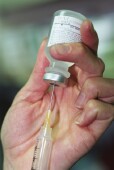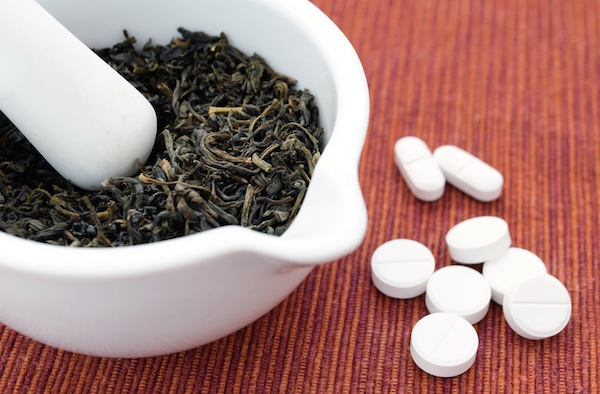
WEDNESDAY, April 30, 2014 (HealthDay News) — A vaccine to protect people against a potential outbreak of H7N9 bird flu has shown promising results, according to a new report.
This flu, first seen in humans in China last year, is common among birds and chickens, but so far isn’t known to spread from person-to-person. However, people who have come into contact with infected birds have been sickened.
“An effective H7N9 vaccine is achievable,” said researcher Dr. Niranjan Kanesa-thasan, from Novartis Vaccines in Cambridge, Mass.
If H7N9 flu were to become a pandemic, this preliminary work would make it simple to ramp up vaccine production and do larger trials, he said.
This flu most commonly infects older people. As of late April, the World Health Organization said 139 cases of H7N9 flu were reported in China. More than 20 percent of those patients have died.
Robin Robinson, deputy assistant secretary for preparedness and response in the U.S. Department of Health and Human Services, said this vaccine is only one step his agency is taking to prepare for a pandemic flu outbreak.
“The vaccine described in this study is one of more than 150 medical countermeasures — drugs, vaccines, and diagnostics — the Biomedical Advanced Research and Development Authority has in the development pipeline in our quest to protect health during emergencies,” he said.
This study — published online April 30 in Science Translational Medicine — “is an important step in moving this candidate vaccine forward,” Robinson added.
Because it’s impossible to know when the next pandemic will occur or which virus will cause it, Robinson said preparedness is key.
“We are working with multiple manufacturers, including Novartis, to develop H7N9 vaccine candidates, evaluate the candidates in clinical trials for safety and effectiveness, and stockpile H7N9 vaccine so our nation can respond quickly if this deadly virus emerges in the United States or becomes a pandemic,” Robinson said.
In order to get an immune-system response, Kanesa-thasan said, the vaccine has to include a component called an adjuvant, in this case one called MF59.
This particular adjuvant is used in Europe to boost the effectiveness of flu vaccine, but has not been approved for use in the United States. “The pathway to approval of adjuvanted vaccine is long and arduous, as it requires significant evidence of safety and effectiveness,” Kanesa-thasan said.
In addition, for the vaccine to be effective, two doses are needed — one to prime the body’s immune system and another to cue the body to produce antibodies, he said.
To develop the vaccine, Kanesa-thasan and colleagues used what’s called synthetic virus technology after the virus’s genes were sequenced.
In a trial of about 400 people, the resulting vaccine was tested in human volunteers, who developed antibodies to the H7N9 virus. However, the researchers can’t be sure the vaccine is effective because those vaccinated haven’t been exposed to the actual virus.
Still, some of the antibody responses were very similar to the antibody responses seen in patients that survived the H7N9 flu, the study authors said.
Dr. Marc Siegel, an associate professor of medicine at NYU Langone Medical Center in New York City, thinks the odds of the H7N9 virus ever becoming a pandemic are slim.
“I don’t think H7N9 is going to turn into a pandemic. There has been no history of a bird flu mutating to the point where it became a human pandemic,” he said.
But Siegel believes that creating a vaccine is a good idea, although he doesn’t think it needs to be produced or stockpiled.
More information
For more information on H7N9 flu, visit the World Health Organization.
Copyright © 2025 HealthDay. All rights reserved.

